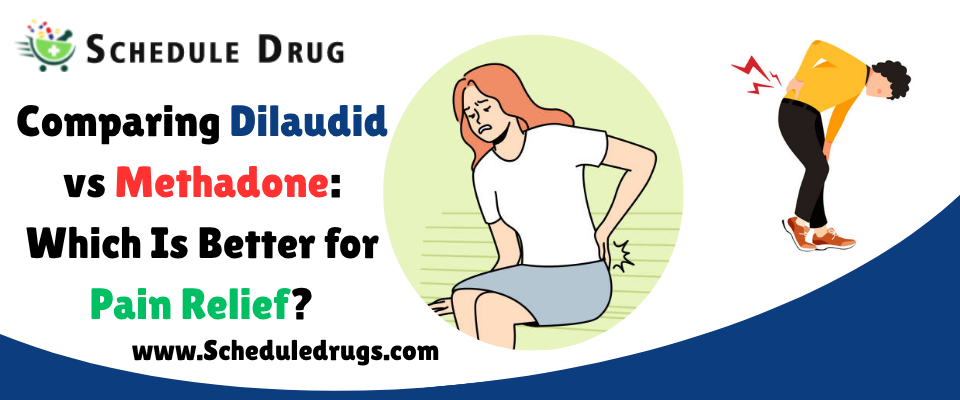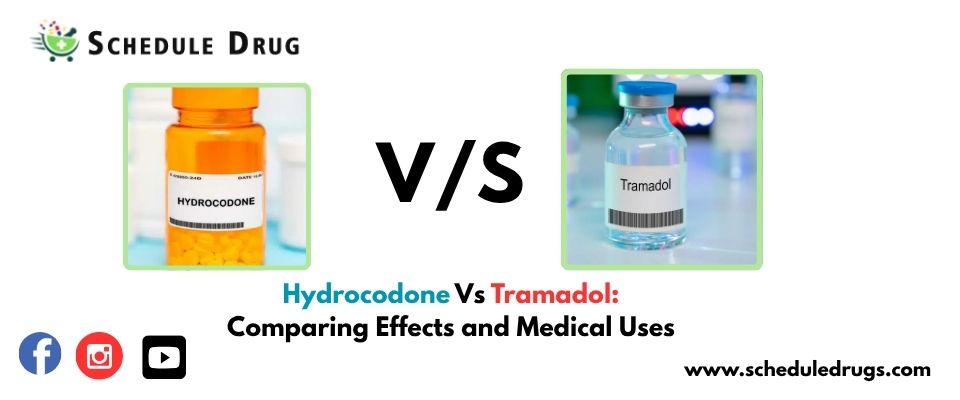Comparing Dilaudid vs Methadone: Which Is Better for Pain Relief?
Both Dilaudid (hydromorphone) and Methadone are powerful opioid medications prescribed for managing moderate to severe pain, but they work in different ways and are suited for different needs. Dilaudid is a fast-acting opioid that provides quick, short-term relief, often used in hospitals or after surgery for intense pain episodes. It has a shorter duration of action, which makes it easier to adjust doses but also increases the potential for frequent use and dependency. Methadone, on the other hand, acts more slowly and lasts much longer in the body, making it effective for chronic pain management and even for treating opioid dependence under medical supervision.
When it comes to managing severe or chronic pain, two medications that often come up are Dilaudid (hydromorphone) and Methadone. Both are powerful opioid pain relievers, but they differ greatly in how they work, how long they last, and the risks involved. Understanding their differences is crucial for patients and healthcare providers to choose the safest and most effective option.
Difference Between Dilaudid vs Methadone
When deciding between Dilaudid and Methadone, the choice largely depends on the type and duration of pain. Dilaudid is ideal for short-term, severe pain that requires fast-acting relief, making it a common option in hospital or acute care settings. Methadone, with its longer-lasting effects, is better suited for chronic pain management or patients needing consistent, around-the-clock relief.
Both medications carry risks of addiction, side effects, and drug interactions, so careful medical supervision is essential. Consulting a healthcare provider ensures that the chosen opioid is safe, effective, and tailored to the patient’s specific pain needs and overall health. Ultimately, the best choice balances pain relief effectiveness, safety, and long-term management considerations.
An Overview Of Dilaudid vs Methadone
Dilaudid (hydromorphone) and Methadone are both powerful opioid medications used for the management of moderate to severe pain, but they differ significantly in how they work and how long they last. Dilaudid is a fast-acting opioid that provides quick relief, making it ideal for acute pain episodes or post-surgical recovery. Its effects typically last for a few hours, so it often requires multiple doses throughout the day. While highly effective, Dilaudid also carries a high risk of dependence and tolerance if used long-term, which is why it’s usually reserved for short-term pain control or when other medications aren’t sufficient.
What is Dilaudid?
Dilaudid is the brand name for hydromorphone, a powerful opioid medication used to treat moderate to severe pain. It is typically prescribed when other painkillers, such as morphine or oxycodone, are not effective.
Dilaudid is a prescription medication commonly used to manage moderate to severe pain. Also known as hydromorphone, this opioid can provide effective relief for patients recovering from surgery or dealing with chronic pain conditions. When considering how to purchase Dilaudid online or order hydromorphone safely, it’s important to follow medical guidance to avoid misuse or potential side effects. Understanding its role in pain management can help users make informed decisions.
What is Methadone?
Methadone is a long-acting opioid medication used to manage moderate to severe pain and as part of treatment programs for opioid dependence. It works by acting on the same opioid receptors in the brain as other opioids, helping reduce pain and cravings.
Methadone is a medication commonly used to treat chronic pain and support recovery from opioid addiction. Whether you are looking to buy methadone online or explore treatment options, it’s important to understand its benefits and potential risks. Methadone works by reducing withdrawal symptoms and cravings, helping individuals manage dependence safely. Users should always follow medical guidance to ensure effective and safe use.
How Dilaudid and Methadone Work
Both Dilaudid (hydromorphone) and Methadone are opioids, meaning they relieve pain by acting on the central nervous system. However, they differ in potency, duration, and mechanism nuances.
Dilaudid (Hydromorphone)
- Mechanism of action: Dilaudid binds to mu-opioid receptors in the brain and spinal cord, blocking pain signals from reaching the brain.
- Effect: Provides rapid and strong pain relief, making it ideal for acute or severe pain, such as post-surgery or injury-related pain.
- Onset & Duration: Works quickly (typically within 15–30 minutes for oral forms), but its effects last shorter than Methadone, usually 4–6 hours.
- Potency: Stronger than morphine milligram-for-milligram, so lower doses are required for effective pain control.
Methadone
- Mechanism of action: Methadone also binds to mu-opioid receptors, but it has additional effects on NMDA receptors in the brain. This can make it effective for chronic neuropathic pain where other opioids may fail.
- Effect: Provides long-lasting pain relief and can stabilize pain levels over time.
- Onset & Duration: Slower onset than Dilaudid (30–60 minutes orally), but its effects can last 8–12 hours or more, allowing less frequent dosing.
- Additional Uses: Used in opioid addiction treatment to reduce withdrawal symptoms and cravings, thanks to its long half-life.
Key Differences in Action
| Feature | Dilaudid | Methadone |
| Pain relief onset | Fast (15–30 min) | Slower (30–60 min) |
| Duration | Short (4–6 hours) | Long (8–12+ hours) |
| Strength | High (strong analgesic) | Moderate-strong |
| Additional effects | Pain relief only | Pain relief + NMDA receptor modulation |
| Common use | Acute, severe pain | Chronic pain & opioid maintenance |
Effectiveness for Acute vs Chronic Pain
Both Dilaudid and Methadone are powerful opioids, but their pain-relieving properties make them better suited for different situations.
Dilaudid (Hydromorphone)
- Acute Pain: Highly effective due to its fast onset and strong potency, making it ideal for post-surgical pain, injury-related pain, or sudden flare-ups.
- Chronic Pain: Can be used, but its short duration of action (4–6 hours) often requires frequent dosing, which increases risk of dependency and side effects.
Methadone
- Acute Pain: Less commonly used for sudden, severe pain because its slower onset means it takes longer to provide relief.
- Chronic Pain: Particularly effective for long-term pain management. Its long half-life (8–12+ hours) allows for stable pain control with fewer daily doses, making it suitable for neuropathic pain or persistent pain conditions.
Uses and Effectiveness
Dilaudid (Hydromorphone)
- Primary Uses:
- Short-term relief of moderate to severe acute pain (e.g., post-surgery, trauma, or sudden pain flare-ups).
- Sometimes prescribed for cancer-related pain when other opioids are ineffective.
- Effectiveness:
- Known for its rapid and powerful pain relief.
- Stronger than morphine, making it effective for patients needing intense but short-lasting relief.
- Not ideal for long-term pain management due to its short duration (4–6 hours).
Methadone
- Primary Uses:
- Chronic pain management, especially for conditions requiring consistent, long-lasting relief.
- Used in opioid dependency treatment programs, helping reduce cravings and withdrawal symptoms.
- Effectiveness:
- Provides steady pain control because of its long half-life (8–12+ hours).
- Effective for neuropathic pain due to its action on NMDA receptors, where some other opioids may fail.
- Less suitable for acute pain since it takes longer to work compared to fast-acting opioids.
Comparison at a Glance
| Feature | Dilaudid (Hydromorphone) | Methadone |
| Best For | Acute, severe pain | Chronic or neuropathic pain |
| Onset | Fast (15–30 min) | Slower (30–60 min) |
| Duration | Short (4–6 hours) | Long (8–12+ hours) |
| Additional Use | Pain relief only | Pain relief + opioid dependency treatment |
Side Effects and Risks
Both Dilaudid (Hydromorphone) and Methadone are potent opioids, which means they carry significant side effects and risks. Knowing these is crucial for safe use.
Dilaudid (Hydromorphone)
-
- Common Side Effects:
- Drowsiness or sedation
- Nausea and vomiting
- Constipation
- Dizziness or lightheadedness
- Sweating
- Serious Risks:
- Respiratory depression (slowed or shallow breathing)
- Addiction, tolerance, and dependence
- Overdose can be fatal if misused
Methadone
-
- Common Side Effects:
- Drowsiness or sedation
- Nausea and vomiting
- Constipation
- Sweating
- Mood changes or anxiety
- Serious Risks:
- Respiratory depression, particularly if combined with other depressants
- Addiction, misuse, and dependence
- Heart rhythm changes (QT prolongation) that may lead to serious arrhythmias
- Overdose risk due to its long half-life, which can cause delayed toxicity
Dilaudid vs Methadone: Key Differences
Pain Relief Effectiveness
- Dilaudid (Hydromorphone): Strong, fast-acting opioid ideal for severe acute pain. Often preferred in hospital settings for quick relief.
- Methadone: Long-acting opioid, effective for chronic pain management. Slower onset but provides more sustained relief over time.
Onset and Duration of Action
- Dilaudid: Rapid onset, typically 15–30 minutes (IV), shorter duration of 3–4 hours.
- Methadone: Slower onset, often 30–60 minutes, but lasts much longer—up to 24 hours in some cases.
Addiction Potential and Safety
- Dilaudid: High risk of addiction and dependence due to rapid euphoria. Requires careful monitoring.
- Methadone: Also addictive but used in controlled settings for both pain and opioid dependency treatment. Safer for long-term pain when monitored.
Cost and Availability
- Dilaudid: More expensive, usually available in hospitals or via prescription; limited outpatient use.
- Methadone: Generally cheaper, widely available in pharmacies; often part of long-term pain management programs.
Drug Interactions and Safety Considerations
Potential Drug Interactions
-
Dilaudid (Hydromorphone):
- Can interact with other CNS depressants (e.g., benzodiazepines, alcohol), increasing risk of respiratory depression.
- May interfere with certain antidepressants (MAOIs, SSRIs) and antihistamines, intensifying drowsiness or sedation.
-
Methadone:
- Interacts with many medications, including antifungals, antibiotics, anticonvulsants, and HIV medications.
- Can prolong QT interval on ECG, increasing risk of irregular heart rhythms when combined with other QT-prolonging drugs.
- Similar to Dilaudid, combining with CNS depressants can be dangerous.
Safety Considerations
- Monitoring: Both drugs require careful dose management, especially in patients with liver or kidney problems.
- Tolerance and Dependence: Long-term use can lead to physical dependence. Methadone’s long half-life can make accidental overdose more likely if dosing isn’t precise.
- Pregnancy and Nursing: Both opioids can affect fetal development or pass into breast milk—consult a doctor before use.
- Signs of Overdose: Respiratory depression, extreme drowsiness, confusion, and pinpoint pupils. Immediate medical attention is critical.
Which Patients Benefit Most from Each Drug?
Dilaudid is best suited for patients experiencing severe acute pain that requires rapid relief, such as after surgery or injury. Its fast-acting nature makes it ideal in hospital settings where immediate pain management is critical. Patients who need short-term opioid therapy and can be closely monitored are the ones who benefit most from Dilaudid.
Methadone, on the other hand, is often preferred for patients with chronic pain who require long-lasting relief. Its extended duration of action makes it effective for ongoing pain management, and it can also benefit patients who are part of opioid maintenance programs. Those who need steady pain control with less frequent dosing typically respond well to Methadone, but careful monitoring is essential due to its addiction potential and drug interactions.
Frequently Asked Questions (FAQ)
What is the main difference between Dilaudid and Methadone?
Dilaudid (hydromorphone) is a fast-acting opioid pain medication primarily used for acute or severe pain, often after surgery or injury. Methadone, on the other hand, is a long-acting opioid used for chronic pain management and in opioid addiction treatment. The key difference lies in their duration of action—Dilaudid provides quick relief, while Methadone offers longer-lasting effects.
Which medication provides stronger pain relief?
Both drugs are potent opioids, but Dilaudid is generally stronger on a milligram-to-milligram basis. However, Methadone’s extended duration and dual action (pain relief and receptor stabilization) make it effective for chronic pain. The “better” choice depends on the type and duration of pain being treated.
Which has a higher risk of side effects or overdose?
Both carry serious risks, but Methadone is more likely to cause accidental overdose due to its long half-life and delayed buildup in the body. Dilaudid acts quickly but wears off faster. Common side effects for both include drowsiness, constipation, nausea, and respiratory depression.
Can Dilaudid or Methadone be used long-term?
Methadone is sometimes prescribed for long-term pain management because of its sustained action. Dilaudid is typically used short-term due to its potency and potential for dependence. Long-term use of either drug should be closely monitored by a healthcare provider.
Which medication is right for me?
The choice depends on your medical history, pain severity, and treatment goals. Dilaudid may be suitable for severe, short-term pain, while Methadone is often preferred for chronic pain or opioid dependence therapy. Always consult a doctor before starting or switching opioid medications.



